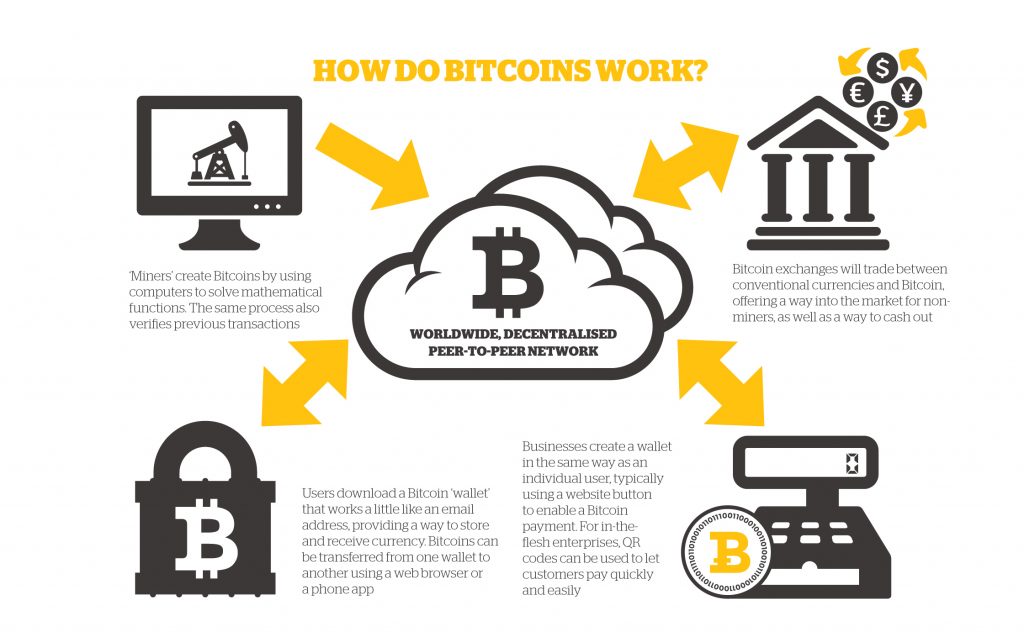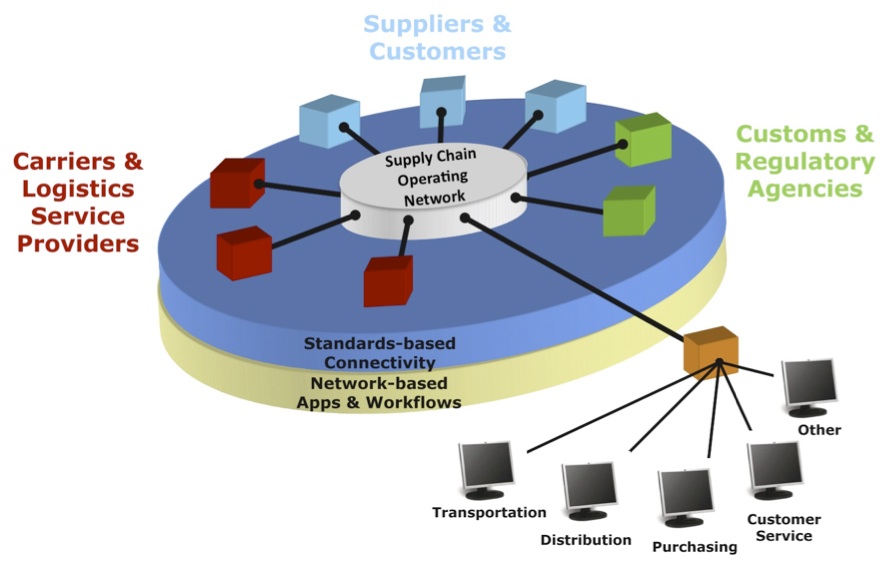I have to admit, I’ve paid very little attention to all the buzz surrounding bitcoin these past few years. I’m fairly conservative when it comes to banking (for example, I’m still not comfortable “depositing” checks using my smartphone), so using a new digital currency, or “fake money” as my wife calls it, to buy stuff isn’t something that appeals to me, especially since bitcoin’s developer remains a mystery. But I read an article in this weekend’s Wall Street Journal – The Revolutionary Power of Digital Currency by Michael J. Casey and Paul Vigna – that opened my eyes to bitcoin’s true potential: as a new operating system for supply chain networks.
The WSJ article and other sources, such as this Khan Academy video series, explain how bitcoin works, so I won’t go into it here. Until I read the article, I had a very limited perspective and understanding of what bitcoin is, which I believe is also the case for most people. As Casey and Vigna put it, “we imagine bitcoin as some sort of digitally rendered equivalent [to a paper dollar bill], much as a Word document is a digital stand-in for a physical page of text.” But as they go on to explain, “there is no such thing as the digital equivalent of a dollar bill. Bitcoins exist purely as entries in an accounting system [emphasis mine] — a transparent public ledger known as the ‘blockchain’ that records balances and transfers among special bitcoin ‘addresses.’ Owning bitcoin doesn’t mean having a digital banknote in a digital pocket; it means having a claim to a bitcoin address, with a secret password, and the right to transfer its balances to someone else.”

In other words, what is truly revolutionary is not the bitcoin (the entry in the ledger), but the technology behind the accounting system, the public ledger itself — that is, the blockchain — and how it can potentially usher in a new generation of software applications that can go well beyond the financial world. And that’s the big bet venture capitalists are making, as Casey and Vigna mention in the article:
“What most excites these investors [such as Netscape founder Marc Andreessen, LinkedIn founder Reid Hoffman, and others that invested $315 million in bitcoin-related projects in 2014] is bitcoin’s promise as a platform whose future applications are almost unimaginably broad. They see a precedent in the core Internet protocols adopted in the 1980s, when no one foresaw such things as Facebook, Twitter, or Netflix. Already, hundreds of specialized apps are being built on top of the digital-currency blockchain software, which is seen in this context as a kind of base operating system.”
In another article published this past weekend, venture capitalist Fred Wilson with Union Square Ventures shared his view that blockchain applications are still the biggest opportunities in bitcoin, “citing decentralized Dropbox-like storage solutions and next-generation databases, as well as new types of marketplaces and ticketing solutions, as potential innovations that could be built on bitcoin’s underlying blockchain ledger.”
Imagine a bitcoin being a unit of inventory and a digital wallet (“bitcoin address”) being an inventory-keeping location, such as a store, distribution center, or truck trailer. A supply chain blockchain application, therefore, could be used to record the balances and transfers of inventory across a distributed supply chain network.
Or imagine a bitcoin being a pallet, tote, keg, barrel, trailer, railcar, ocean container, or other conveyance or asset. An asset owner could use a blockchain application to track the quantity and transfer of assets as they move between supply chain nodes.
Of course, bitcoin as it exists today also has the potential to transform freight audit and payment and other supply chain finance processes, especially for small suppliers and transportation providers.
Although the technical details are beyond my realm of expertise, if my interpretation of what a blockchain is and does is correct, then I believe we are indeed in the early stages of a new computing era. Much like the Internet triggered the evolution away from client/server applications toward Web-based apps, software-as-a-service, and today’s cloud solutions, the peer-to-peer, decentralized architecture of blockchain has the potential to trigger a new wave of innovation in how supply chain applications are developed, deployed, and used. The blockchain, in essence, could become the new operating system for Supply Chain Operating Networks — like Descartes, Elemica, GT Nexus, LeanLogistics, and others that combine B2B connectivity with software applications — and also help federate those networks.

Thinking more broadly, the evolution of blockchain apps will ultimately intersect with what’s happening in the Internet of Things (IoT) world, where the ledger entries will be made automatically by the inventory and assets themselves as they move across the supply chain.
(But I’m getting way ahead of myself, and way ahead of what most companies are willing or ready to implement in the near future.)
Nonetheless, although 2015 has just begun, I already have one of my supply chain and logistics predictions for 2016 and beyond on the list: the rise of blockchain apps for supply chain management.










